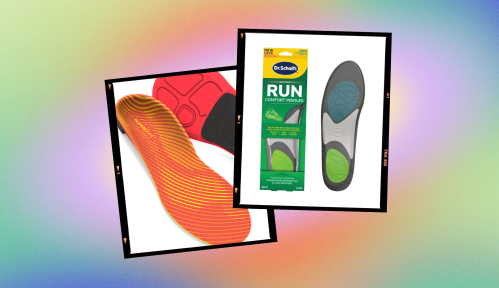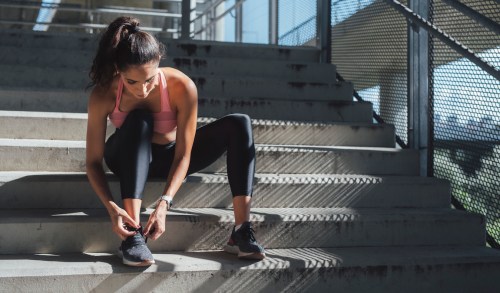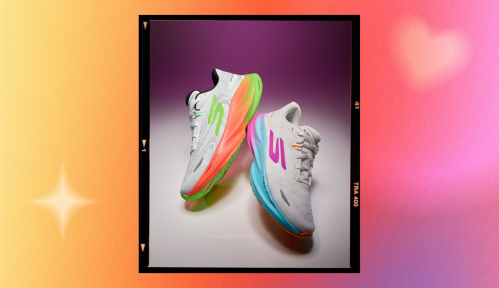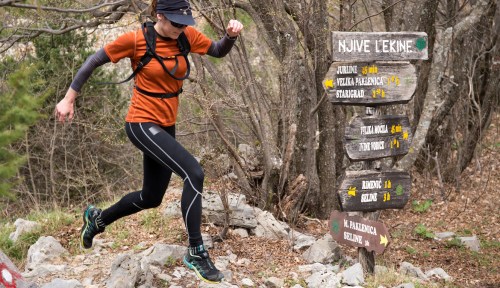The ’90s are back: Here’s why nostalgia is the hottest trend in fashion
Dr. Martens, floral sundresses, and scrunchies... Fashion and pop culture operate on a "nostalgia pendulum." And '90s fashion trends are back.

To help get me in the mood to write this piece, I cued up Alanis Morissette’s “Jagged Little Pill.” The album, originally released in 1995, transported me back to a simpler time. In the ’90s, I begged my parents to let me buy a pair of Steve Madden platform slides and I belted Morissette’s lyrics into my hairbrush while thinking about an imaginary relationship. Now, decades later, I’ve experienced real heartbreak and somehow those Steve Madden slides are currently available from Urban Outfitters. It’s 2019, but ’90s fashion trends are back.
There’s a theory that fashion and pop culture operate on a “nostalgia pendulum,” wherein what’s old is new again every 20 to 30 years. Which is why everyone (myself included) is feeling ’90s fashion staples like Dr. Martens, floral sundresses, scrunchies, and Adidas track pants—yes, please. Nostalgia is fashion’s hottest trend.
Dr. Martens, floral sundresses, scrunchies, and Adidas track pants—yes, please.
“The few studies that have examined nostalgia experiences in the brain have implicated regions associated with memory, such as the hippocampus, and reward areas of the brain, including the substantia nigra and ventral tegmental area, which located deep in the midbrain,” explains Holly Bowen, PhD, assistant professor in the Department of Psychology at Southern Methodist University. “These areas are functionally connected, or ‘talking to each other’ during nostalgia experiences.” Essentially, nostalgia boosts your mood.
Yes, nostalgia is wistful longings of times gone by, and now we typically tend to think of this as a positive experience. But originally the term—characterized by physician Johannes Hofer—was used to describe feelings associated with ‘homesickness’ such as anxiety and insomnia, Bowen explains.
Does wearing ’90s fashion trends trigger the feel-good vibes you get from listening to an old N’Sync album? Like wrapping yourself in the clothing equivalent of a warm hug? “It certainly sounds sensible to me! It might remind you of times past that were warmer, more connected,” says Sarah Rose Cavanagh, PhD, an associate professor of psychology at Assumption College.
“If a certain piece of clothing serves as a retrieval cue, meaning it triggers or helps you brings back to mind some positive memory from the past, that can make you feel good,” Bowen adds. “It has been argued that positive memories exist for this reason. We may have evolved to retain positive memories to induce feelings of happiness, which can be important for our overall well-being.”
“If a certain piece of clothing serves as a retrieval cue, that can make you feel good.”
Nostalgia can “serve to make people feel socially connected and recall times when they were close with people who were important to them,” says Cavanagh. (So, the relationship between my younger self and my cardboard cutout of Legolas—I just really had a thing for Orlando, okay?) “It can shore up feelings of meaning and reduce feelings of isolation,” she says. (Though, she notes that for people low in trust about their social relationships, nostalgia would actually make them feel worse.
Bowen says that when you remember an event, you reactivate some of the same brain regions you used when you experienced said event. “My research has shown that this reactivation happens to a greater extent for negative, compared to positive or emotionally neutral memories, which may explain why negative memories often feel so vivid like you are re-experiencing that event when you think about it now.” This came up because I mentioned that while things like slip dresses and butterfly clips make me happy. Low-rise jeans, which are also coming back into style, trigger very negative emotions.
Add low-rise jeans to the growing list of trends I will be sitting out.
“If low-rise jeans made you anxious about your appearance, or if you were uncomfortable with how you looked because of the clothing you were wearing, our memories allow for those same feelings to be reactivated or brought back to mind when we are triggered to think about them in the present,” Bowen explains. “These negative memories may serve us well, though, and lead us to make different decisions when making fashion choices in the present.” Add low-rise jeans to the growing list of trends I will be sitting out.
“Thinking about our positive memories is often part of therapy, and in older adults who do this type of therapy it can increase their self-worth and a desire to live,” Bowen says. “Many times these memories include friends, or experiences we had with other people, and thinking back on them can increase a sense of belonging and social connectedness.” Trends don’t come back in style because there is a lack of creativity, but because they’re a way we can revisit times where we felt connected.
Ready to party like it’s 1999? These are the ‘90s fashion trends you need to know. And here’s a look at how brands are using fashion to transform our conversations.
Sign up for the Well+Good SHOP Newsletter
Get exclusive deals on wellness, beauty, fitness, and food products that have been hand-picked by our editors.
Got it, you've been added to our email list.









